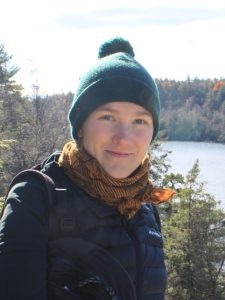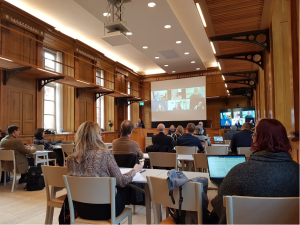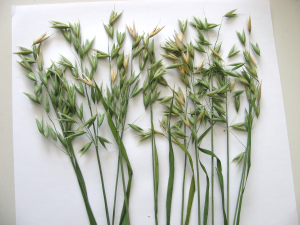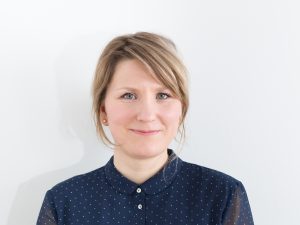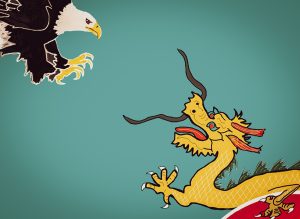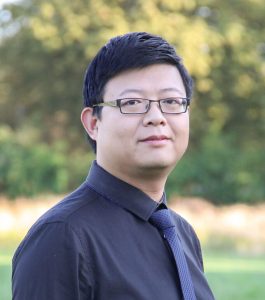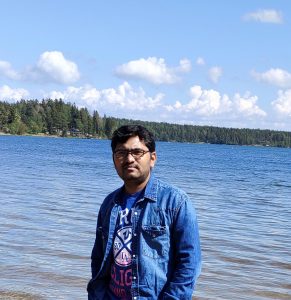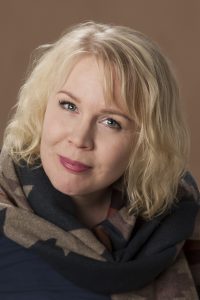
Karoliina Lummaa, Kollegiumtutkija, TIAS / Kotimainen kirjallisuus. Kuva: Sirpa Ryyppö
Puut ovat kasvaneet yhä suoremmin sekä metsissä että runoudessa 1970-luvulta alkaen. En ole suomalaisen luontorunouden tutkijana tästä yllättynyt. Tein pitkään töitä linturunouden parissa ja totuin DDT:n myrkyttämiin, pesäpuunsa menettäneisiin ja kaupungistuneisiin lintuihin. Bongasin runoudesta muutaman rengastetunkin linnun ja opin näkemään, kuinka ihmisen toiminta luonnossa näkyy myös runoteoksissa.
Tällä hetkellä tutkin suomalaisen nykykirjallisuuden metsäkuvauksia sekä luonnonvara-alan ja luonnontieteellisen kirjallisuuden tapoja jäsentää metsäluonnon kulttuurisia merkityksiä. Näen jännittäviä yhtäläisyyksiä ja risteämiä taiteen, tieteen ja luonnonvarahallinnan metsäkäsityksissä. Luonnonvarahallinnassa puhutaan kulttuurisista ekosysteemipalveluista, ja runoudessa sommitellaan säkeitä hiilensidonnasta ja biodiversiteetistä. Ikimetsän soittolista -kokoelmassaan (2021, Aviador) Janette Hannukainen riimittelee: ”Oi sinä hellin hengittäjäiseni / halutuin hapen antajaiseni”. Niin tutkimuksessa kuin taiteessakin korostetaan metsien tuottavan ihmiselle aineellista ja aineetonta hyvää.
Suomalaisessa runoudessa metsäluonnonvarojen tehostuneesta käytöstä alettiin kirjoittaa 1970-luvun mittaan yhä enemmän – katseen tarkentuessa usein suorina kasvaviin ja kaadettaviin puihin. Paavo Haavikon kokoelmassa Runoja matkalta salmen ylitse (1973, Otava) on seuraava yksisäkeinen, mutta monitulkintainen runo: ”Puut kasvavat täällä kohtisuoraan.”
Metsiä ojentava suoruuden ja suorakulmaisuuden ihanne jäljitettiin runoudessa usein kaupunkeihin. Hannu Salakka kuvasi kaupunkiluonnon luonnottomuutta kokoelmassaan Ennen kaipasin tähän (1983, Otava): ”Puiden juurille pääsee hissillä / mutta metsä on puisto, / ei kiveä tai oksaa johon kompastua”. Samassa runossa runon puhuja toteaa: ”Istun lasin takana / ja ihmettelen neliöitä, / joita arkkitehdit aina piirtävät.”
1970- ja 1980-lukujen runouden metsissä puut olivat usein vaakasuorassa, kaatumassa tai kaatuneina. Kokoelmassaan Itkevät kannot (1982, Karisto) Veikko Haakana kirjoittaa: ”Tukkiautoja täysin lastein yötä päivää / ruumisautoja / tästä ohitse Nelostietä etelään.” Vaakasuoraan ladotut puuruumiit metsäteollisuuden kuvana on toki vanha ja esiintyy esimerkiksi Pentti Haanpään novellissa ”Puolimiljoonaa puunrunkoa” kokoelmassa Karavaani (1930, Kansanvalta). Uusimmassa runoudessa puuruumiista kirjoittaa Erja Laakkonen teoksessaan Metsä vastasi minulle (2020, Kirjokansi): ”Metsä mielettä makaapi / salon sielu on sahalla / Haapa haltian hakattu / viety varjo vartijalta”.
Elävien puiden suoriin istutetut rivit komeilevat tiheinä Jouni Tossavaisen runokokoelmassa Metsännenä (1990, Kustannuskiila). Puurivit ovat ihmisen käsialaa: ”Kaikki kävelivät mutkia metsässä. Paitsi ihminen joka panee / pieniä puitaan suoraa kulmaa silmällä pitäen. [–] Niin on puiden tilalle saavutettu tasapää metsä.” Toisaalla kokoelmassa todetaan: ”Minä tiedän että metsällä on ääri, syrjä ja sivu. Minä tiedän, / minä en pelkää mitä metsän takana on. Kiitos / laboratoriotalouden minun ei tarvitse mitään yllättävää / puittesi takaa odottaa. [–] Ei ole / oravametsää, ei ole jänismetsää. En mene kalametsään. On runometsä, on rahametsä / jokaisen lukutaitoisen päässä.”
Tossavaisen runot ivaavat ihmisen vankkumatonta uskoa luonnon hallintaan, mutta ne myös vertailevat erilaisia metsien käyttötapoja toisiinsa. Edellä lainatuissa säkeissä rinnastetaan luvut ja lukeminen – siis taloudellisen hyödyn tavoittelu ja taiteellinen tunnelmointi, jotka usein nähdään toistensa vastakohtina. Metsännenässä Tossavainen kirjoittaa myös: ”Kun puun ekologinen ja esteettinen arvo ylittää sen raaka- / aineen arvon, hänet säästetään.” Raaka-aineena puu on ”sitä”, ihmisen silmää miellyttävänä tai ekosysteemin toimintaa kannattelevana ”hän”.

Talousmetsää. Kuva: Ate Tervonen
Mikael Bryggerin esikoiskokoelmassa Valikoima asteroideja (2010, Poesia) on kuvaruno, jossa kasvatetun metsän suorat rivit ja neliöt tulevat visuaalisestikin havaittaviksi. Kokoelman sivulle 35 on sommiteltu p- ja u- kirjaimista säännönmukainen kärjellään seisova neliö, jonka keskellä on kirjaimeton, neliönmallinen aukko. Sivun oikeassa laidassa on suuraakkosin ladottu otsikko ”METSÄ”. Otsikko ohjaa hahmottamaan neliössä risteilevistä p- ja u-kirjaimista ”puu”-sanoja. Bryggerin visuaalisen runon voi katsoa vastaavan näkymää istutetussa ja hakatussa metsässä, vaikka runossa tapahtuu ja on tietysti paljon muutakin.
Runous välittää esteettisiä odotuksia ja arvoja, joita ihminen metsiin kohdistaa. Puurivistöjen suoruus kiinnittää metsässä huomiota, koska sellaista suoruutta ei koeta luonnolliseksi. Metsäalan tietoa yksiin kansiin kokoavassa, muutaman vuoden välein uudistettavassa Tapion taskukirjassa (2018, s. 209) Luonnonvarakeskuksen tutkijat Tuija Sievänen ja Liisa Tyrväinen kirjoittavat: ”Eniten pidetään luonnonmukaiselta näyttävästä metsästä, jossa ei näy suoraan intensiivisen metsätalouden jälkiä, kuten laajoja avohakkuita, kantoja, hakkuutähteitä tai maanpinnan käsittelyä.” Metsän kauneuskriteerejä pohtinut ympäristöestetiikan professori emeritus Yrjö Sepänmaa (2006, s. 244) puolestaan on todennut: ”Vieraimmaksi koetaan puupelto: geometrisiin muodostelmiin istutetut samanikäiset puut.”
Geometrisyys kiusannee metsänkävijän silmää siksi, että metsässä ihminen odottaa näkevänsä ja kokevansa luonnon omaa järjestymistä. Puiden olisi sijoituttava niiden omien tarpeiden ja taipumusten mukaan, tuloksena lajienvälisistä prosesseista, joihin ihminen ei ole puuttunut. Suoriin riveihin istutetuissa puissa ei näy metsän vaan ihmisen kädenjälki.
Runouden puiden suoruus viittaa kuitenkin aina tavalla tai toisella ihmisiin. Kaadetun puun vaakasuoruus vertautuu ihmisruumiiseen, ja suoriin riveihin istutetut puut kertovat ihmisen vallasta luontoon. Puiden oman toiminnan kuvitteluun suorat ja neliöt taipuvat huonommin. Puiden suhteet muihin lajeihin ovat kierteisiä ja verkottuneita, ja niiden biofysikaalinen elämä haarautuu juurina ja oksina ja hajaantuu kaasuina, hiukkasina ja siemeninä sinne tänne.
Ehkä puu on suora lopulta aina vain ihmiselle?
Tutkimuslähteet:
Sepänmaa, Yrjö 2006. Millainen metsä on kaunis? Teoksessa Riina Jalonen, Ilkka Hanski, Timo Kuuluvainen, Eero Nikinmaa, Paavo Pelkonen, Pasi Puttonen, Kaisa Raitio & Olli Tahvonen (toim.) Uusi metsäkirja. Helsinki: Gaudeamus. 241–246.
Sievänen, Tuija & Liisa Tyrväinen 2018. Metsän virkistys- ja matkailukäyttö. Teoksessa Satu Rantala (toim.) Tapion taskukirja. 26. uudistettu painos. Tapio Oy & Metsäkustannus Oy, Helsinki. 203–212.


